Past Sessions in 2023

Solar Hydrogen Production and Its Challenges
Yan Hau NG
Hong Kong Institute of Clean Energy, CityU
School of Energy and Environment, CityU
Solar hydrogen production from photocatalytic and photoelectrochemical reactions employing photoactive semiconductors under visible light has been considered a potential alternative to make solar energy storable and transportable. Hydrogen generation from the photocatalytic splitting of water as well as photocatalytic conversion of CO2 into chemical fuels (e.g. methane and methanol) are two good examples of solar fuel production assisted by solar energy. These reactions have demonstrated the potential to simultaneously address the energy shortage and environmental issues by minimizing the usage of fossil fuels. A great number of photoactive semiconductors (be it oxide, nitride, sulphide or others) have attracted extensive attention due to their affordability, mostly non-toxic, and with considerable theoretical photocurrent density for fuel generation. The challenges in extending their capability in this application lie in several aspects, such as the extension of the solar spectrum absorption, the charges transportation, and the photo-stability of the materials. For example, TiO2 absorbs only UV wavelength,
Cu2O suffers from photocorrosion and many others experience significant charges recombination processes. The introduction of nanostructures or secondary components into the parental semiconductor is a potential way in tackling the above mentioned issues.
The main driving force for our research in School of Energy and Environment at CityU is to improve (if not
overcome) the above shortfalls by using several different electrochemical and chemical approaches. In
this talk, strategies in developing efficient oxide-based photocatalysts for the above-mentioned reactions
will be shared.
About the Speaker: Yun Hau NG is a professor at the School of Energy and Environment, City University of Hong Kong. He received his Ph.D. (Chemistry) from Osaka University in 2009. After a brief attachment at Prof. Prashant Kamat’s laboratory at University of Notre Dame, he moved to Australia and became a lecturer at the University of New South Wales (UNSW) in 2014. He joined CityU in 2018. He received a few recognitions in photocatalysis research, including Honda-FujishimaPrize (2013), Distinguished Lectureship Award from the Chemical Society of Japan (2018), APEC Science Prize for Innovation, Research and Education (ASPIRE) in Chile (2019), and Kataoka Lectureship Award from the Japanese Photochemistry Association (2021).

Boosting Urban Renewable Energy Access through Innovative Photovoltaic Technologies:
Current Developments and Future
Hin-Lap YIP
Department of Materials Science and Engineering, CityU
School of Energy and Environment, CityU
Hong Kong Institute of Clean Energy, CityU
The global push towards carbon neutrality has led governments worldwide, including Hong Kong, to prioritize deploying renewable solar energy as a central component of their climate action plans. This talk will provide an overview of the current state of solar energy development, followed by a focused exploration of cutting-edge photovoltaic technologies that promise to revolutionize renewable energy access in urban environments.
In this talk, I will provide an overview of the progress in solar energy, highlighting the improvements in efficiency and affordability of conventional silicon-based solar panels, as well as the emergence of cutting-edge technologies such as perovskite and organic solar cells. We will discuss the potential of these next-generation solar cells-characterized by their printability, flexibility, transparency, and color-tunability-for widespread adoption in densely populated urban cities like Hong Kong.
These next-generation solar cells offer unique advantages over conventional solar PV technologies, particularly their ability to seamlessly integrate into the built environment as tinted solar windows, façades, or curtains. This enables them to generate substantial solar electricity in urban areas with limited land and rooftop space for conventional solar panel installations. Furthermore, I will address the challenges and opportunities in scaling up the deployment of these technologies, as well as the implications for policy and industry stakeholders in achieving a sustainable, low-carbon future.
About the Speaker: Angus YIP, Hin-Lap joined the Department of Materials Science and Engineering (MSE) and School of Energy and Environment (SEE) at the City University of Hong Kong as Professor in 2021, and he also serves as the associate director for Hong Kong Institute for Clean Energy (HKICE). He is a fellow of the Hong Kong Young Academy of Sciences. From 2013-2020, he was a Professor at the State Key Laboratory of Luminescent Materials and Devices (SKLLMD) and the School of MSE at the South China University of Technology (SCUT). His research combines materials, interface, and device engineering to improve polymer and perovskite optoelectronic devices. He has published over 270 scientific papers with citations over 37000 and an H-index of 99. He was also honored as ESI “Highly Cited Researcher” consecutively from 2014-2022.
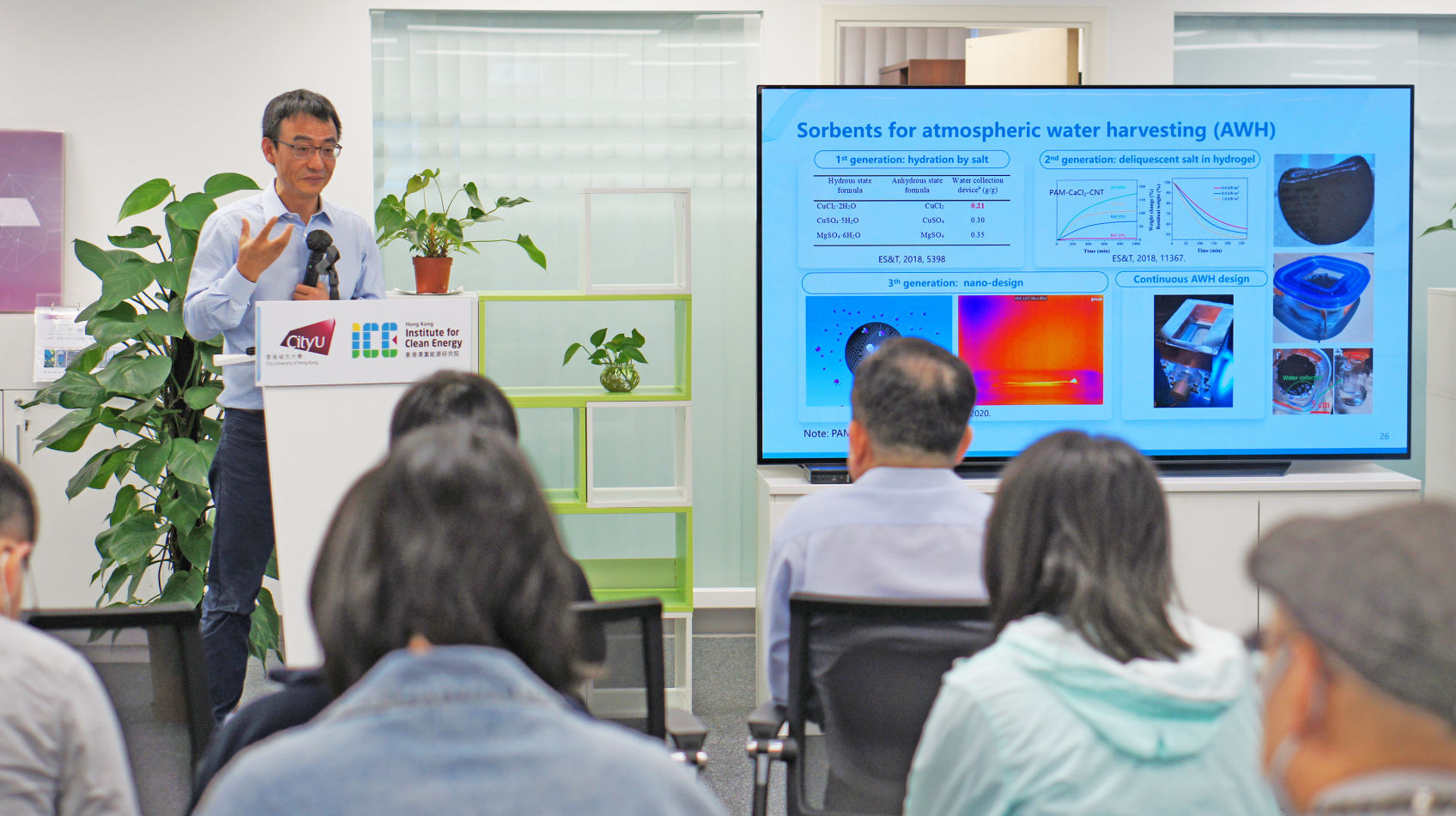
Renewable Energy Driven Decentralized Clean Water Production from Unconventional Sources
Peng WANG
Civil and Environmental Engineering, The Hong Kong Polytechnic University, Hung Hom, Hong Kong
King Abdullah University of Science and Technology, Thuwal, Saudi Arabia
In this presentation, three processes will be introduced as our recent efforts to supplement freshwater production from unconventional sources and to enhance solar-energy conversion by water-based approaches. (1) The photovoltaic-membrane distillation (PV-MD) utilizes the waste heat of a PV panel to drive water distillation within a multistage MD design. The state-of-the-art PV-MD is able to produce freshwater at a record-breaking rate and cools PV panels at the same time. (2) There is plenty of water vapor constantly preserved in the earth’s atmosphere. Sorption-based atmospheric water harvesting (AWH) is emerging as an attractive way of producing fresh water. AWH has recently been extended to help cool PV panels, which led to a 19% increase in electricity production by the same PV panel at field tests. (3) As seawater desalination is booming in many parts of the world, proper disposal of the seawater desalination brine becomes a global challenge. A three-dimensional (3D) solar crystallizer design has been developed to physically separate light absorption and salt crystallization surfaces. Such a system is able to perform a continuous treatment of real Red Sea seawater desalination brine.
About the Speaker: Dr. Peng Wang is a faculty member at The Hong Kong Polytechnic University. He joined KAUST in Saudi Arabia in 2009 as a founding faculty member and was the chair of Environmental Science & Engineering program at KAUST from 2013 to 2017. Dr. Wang is the Fellow of Royal Society of Chemistry (FRSC) and was awarded The Mohammed Bin Rashid Global Water Award (3rd cycle) in 2023 and 9th Prince Sultan bin Abdulaziz International Prize for Water (PSIPW) in 2020. Dr. Wang serves as an Executive Editor and Associate Editor of Environmental Science & Technology (ES&T). He is a member of Advisory Committee on Water Supplies at Hong Kong.
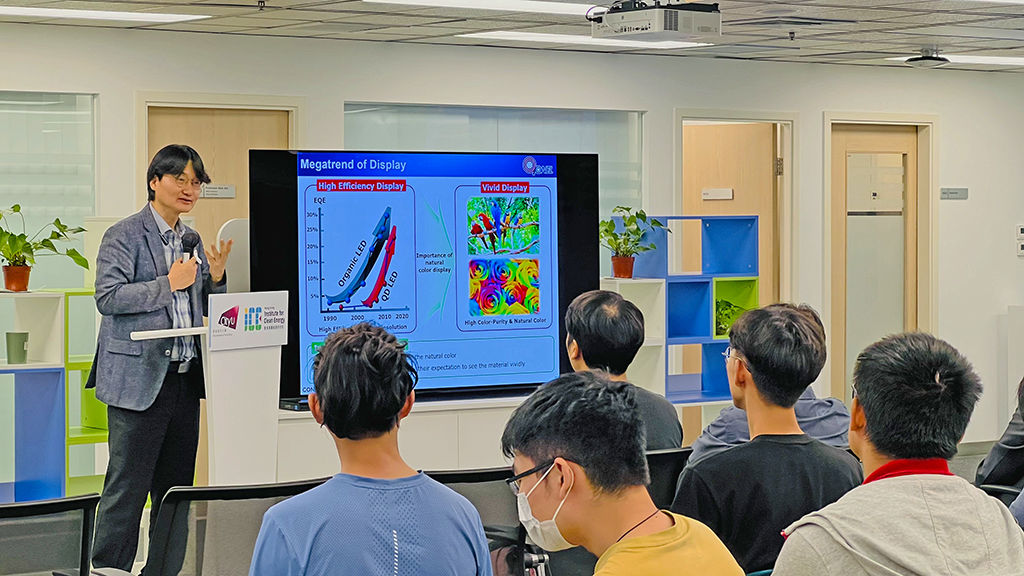
State-of-the-Art Perovskite LEDs
Tae-Woo LEE
About the Speaker: Professor Lee is a professor in the department of Materials Science and Engineering (MSE) at Seoul National University, Korea. He received his Ph.D. in Chemical Engineering from KAIST, Korea in 2002. He joined Bell Laboratories, USA, as a postdoctoral researcher and worked in Samsung Advanced Institute of Technology as a member of the research staff (2003–2008). He was an associate professor in MSE at Pohang University of Science and Technology (POSTECH), Korea, until August 2016. He was elected as a Materials Research Society (MRS) fellow in 2020. His research focuses on printed electronics based on organic and organic-inorganic hybrid materials for flexible displays, solid-state lighting, solar energy conversion devices, and bio-inspired neuromorphic devices.
LEE Personal Website
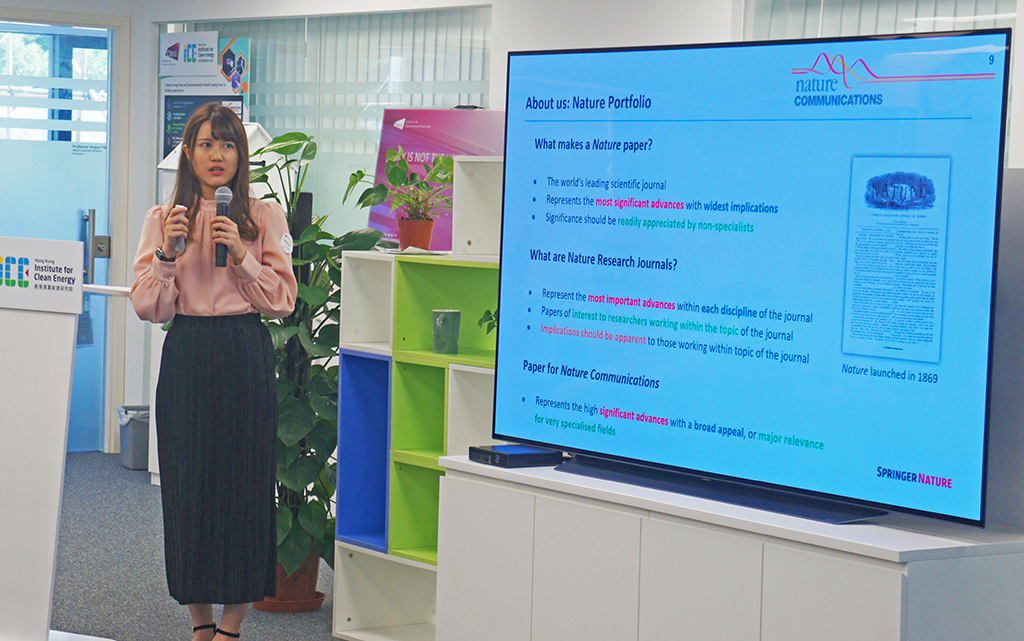
Nature Communication: Insights into Scientific Publishing and Writing Tips
Natalie LOK Kwan Li
Launched in 2010, Nature Communications is the flagship open access journal from Nature Portfolio dedicated to publishing significant advances in each field in a multidisciplinary venue across all areas of science and technology. In this talk, I will introduce the journal with its aim and scope and give an overview of the editorial and peer-review process and what editors look for in a manuscript. I will provide tips on how to write a convincing cover letter, abstract and paper and how to prepare your manuscript for submission. This talk will also cover the recent trends and developments in scientific publishing including new forms of peer review and reporting of data, in addition to some possible misconceptions towards the journal and suggestions on how to prepare yourself for scientific publishing.
About the Speaker: Natalie is an Associate Editor from the Applied Physics Team of Nature Communications, where she handles manuscripts mainly in the areas of photovoltaics and optoelectronics, such as solar cells and light-emitting diodes. She received her Ph.D. in Chemistry from the University of Hong Kong, where she also worked as a postdoctoral researcher.

The World, The Future, The NEXT
Xuanheng ZHU
Next Energy (Next Energy | All Journal Issues | ScienceDirect.com by Elsevier) – is an open-access scientific journal from Elsevier managed by a team of professional in-house editors, sister journal of Next Materials, Next Sustainability, and Next Nanotechnology.
Led by Dr Rose Zhu (founding editor of Joule), Next Energy publish all aspects of cutting-edge research and innovations in the fields of energy. The goal of the Next journals is to publish the leading research as well as providing a truly author-centric to scientists. We are proud to be able to provide authors with high quality publishing experience and a broad platform for multidisciplinary research.
Dr Xuanheng ZHU – an associate scientific editor of Next journals, will bring everyone into the Next family, as well as sharing the experience and tips in manuscript preparation, paper handling, etc.
Cell Press Introduction
Yuen YIU
More than a household name in life sciences, Cell Press also publishes top tier, high impact physical science journals, including Joule, Chem, Matter, and the latest addition to the flagship lineup—Device.
At Device, we support device and application-oriented research from all disciplines, including applied physics, materials science, nanotechnology, robotics, biomedical technology, photonics, integrated circuits, and more. We consider research of all scales and stages of development, ranging from development to deployment, from benchmarking to optimization, from prototyping to scaling up, as long as the technology is rooted in a real-world and purpose-driven context.
Dr. Yuen Yiu—a senior editor of Device, will share with you the publishing ecosystem of Cell Press, and where and how to submit your research to one of Cell Press’ top tier series of journals.
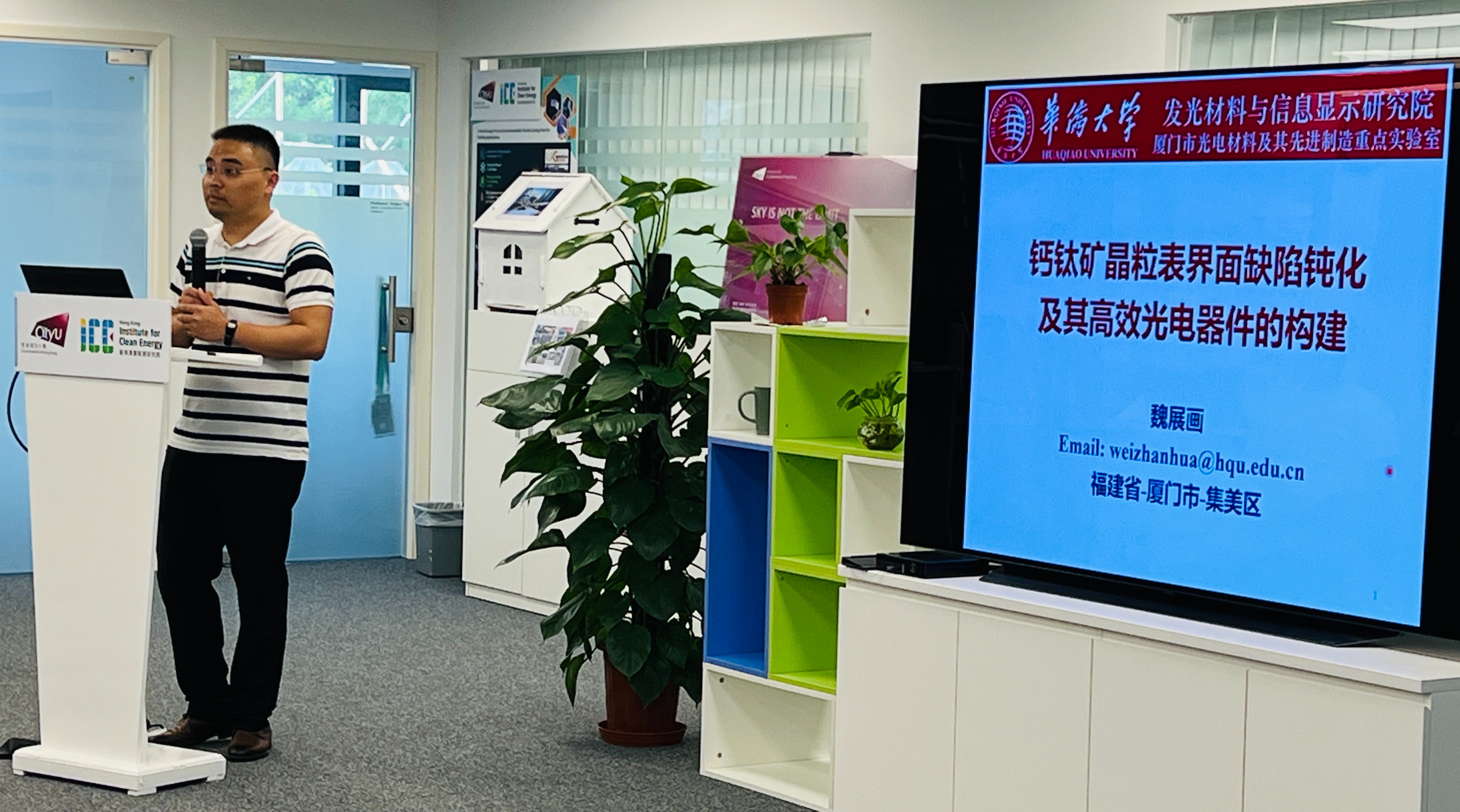
High-performance Perovskite Optoelectronic Devices via Grain Surface Capping
WEI Zhanhua
Metal halide perovskites are emerging as promising optoelectronic materials with advantages like easy solution-based fabrication, low material cost, high defect tolerance, and high PLQY. The MHPs have shown great potential in applications like LEDs and solar cells.
As for the perovskite LEDs, before 2016, it was highly challenging to prepare a high-quality perovskite emitting layer by the conventional method. The as-prepared perovskite films always show too many pin-holes, dis-ordered lattice, and non-radiative defects. As a result, the corresponding device performance, especially for the external quantum efficiency (EQE), is far behind organic LEDs and quantum dot LEDs. Our group has been focusing on perovskite LEDs for years. In 2018, we prepared a quasi-core-shell structure of CsPbBr3@CH3NH3Br, passivated the non-radiative defects, improved charge injection balance, and achieved a milestone EQE of over 20%.[1] In 2021, we utilized the TFPPO to tune the crystalline dimension of 2D/3D perovskite, reducing the defect formation and significantly improving the PLQY. As a result, we got an impressive EQE of over 25%.[2] Moreover, we will introduce some progress about manipulating crystal growth, regulating phase composition[3], optimizing device structure, and lead-free perovskite-based LEDs[4].
As for the perovskite solar cells (PSCs), we have been focused on preparing ultra-pure FAPbI3 active layer[5], synthesis of functional fullerene and the application in PSCs, perovskite/silicon tandem solar cells. Recently, we successfully boosted the power conversion efficiency to over 25 % with an operational lifetime of over 1,500 h.
Reference:
[1] Nature 2018, 562 (7726), 245-248.
[2] Nature 2021, 599 (7886), 594-598.
[3] Advanced Functional Materials 2022, 2200350.
[4] Adv. Mater. 2021, 33 (44), 2104414.
[5] J. Am. Chem. Soc. 2019, 141, 20537.
About the Speaker: Zhanhua Wei is a full-time professor at the Institute of Luminescent Materials and Information Displays, College of Materials Science and Engineering, Huaqiao University, China. He received his B.S. degree in 2011 from the Department of Chemistry, Xiamen University, China, and his Ph.D. degree in 2015 from Prof. Shihe Yang’s group, Department of Chemistry, Hong Kong University of Science and Technology, China. After postdoc research with Prof. Qihua Xiong at Nanyang Technological University, he joined Huaqiao University as a principal investigator in May 2016. His current research focuses on perovskite light-emitting diodes, perovskite solar cells, and other optoelectronic materials and devices. He has published over 60 peer-reviewed papers in scientific journals like Nature, J. Am. Chem. Soc. and Adv. Mater.
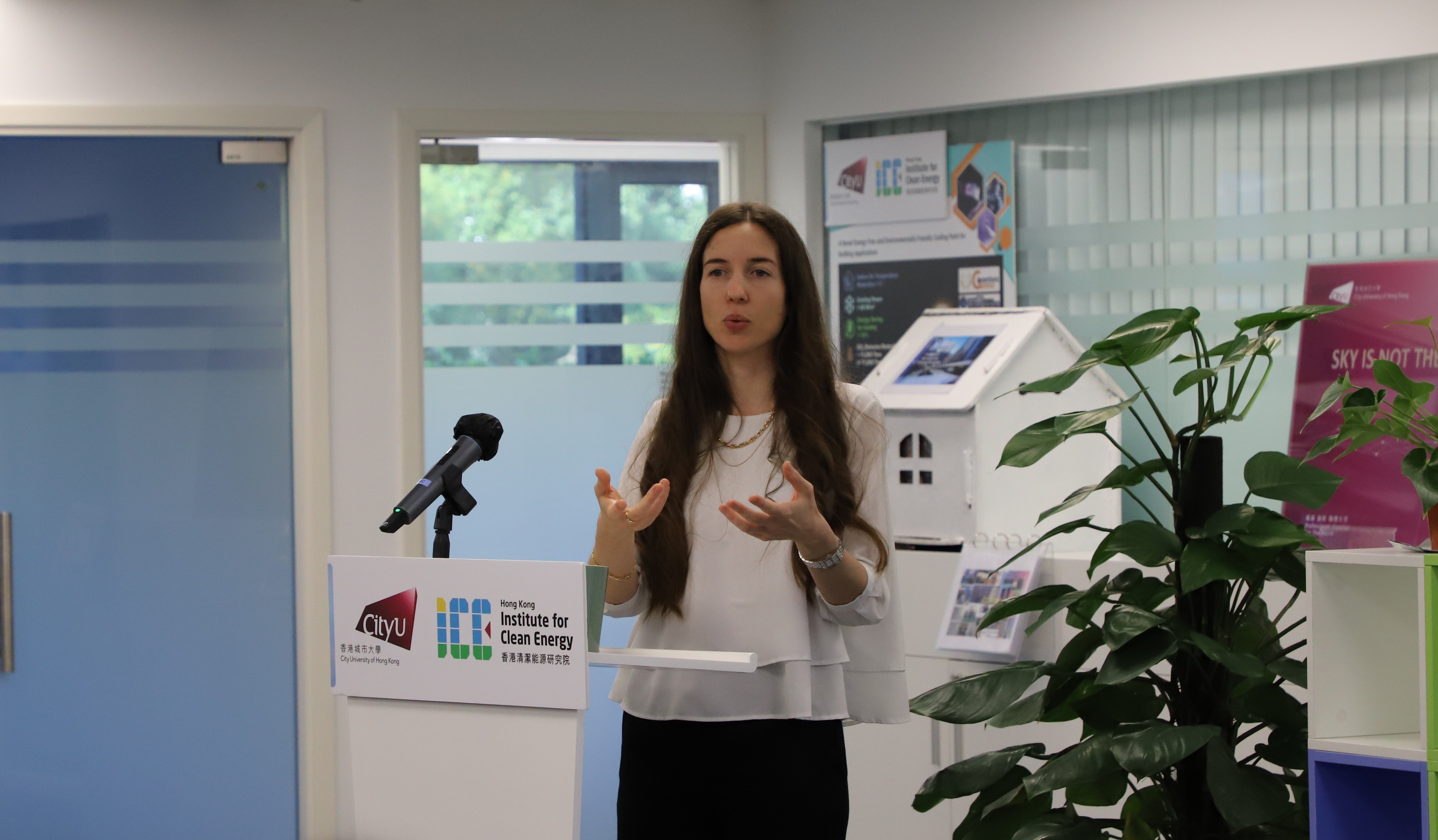
Nature Energy: an overview of the journal
Giulia TREGNAGO
Nature Energy is a monthly, online-only peer-reviewed scientific journal publishing the best research on energy. The journal and its team of full-time professional editors are dedicated to exploring all aspects of this topic, from the generation and storage of energy, to its distribution and management, the needs and demands of the different actors, and the impacts that energy technologies and policies have on societies. We have a particular interest in studies that advance our knowledge and inform the development of next-generation technologies and solutions. The journal serves as a forum for all parties active at the frontiers of energy to come together and learn about the different facets of this sector. The presentation provides an overview of the journal and the content published in terms of both original research and commentary pieces such as Comments, Perspectives, or Reviews as well as editorial initiatives from across the full range of disciplines concerned with energy.
About the Speaker: Giulia joined Nature Energy in late 2018. She obtained her PhD in Physics from University College London, her research activities focussed on organic semiconductors for optoelectronics and dye-sensitised solar cells. At Nature Energy, she handles content in the area of photovoltaics, wind energy, energy harvesting, and heating and cooling technologies.
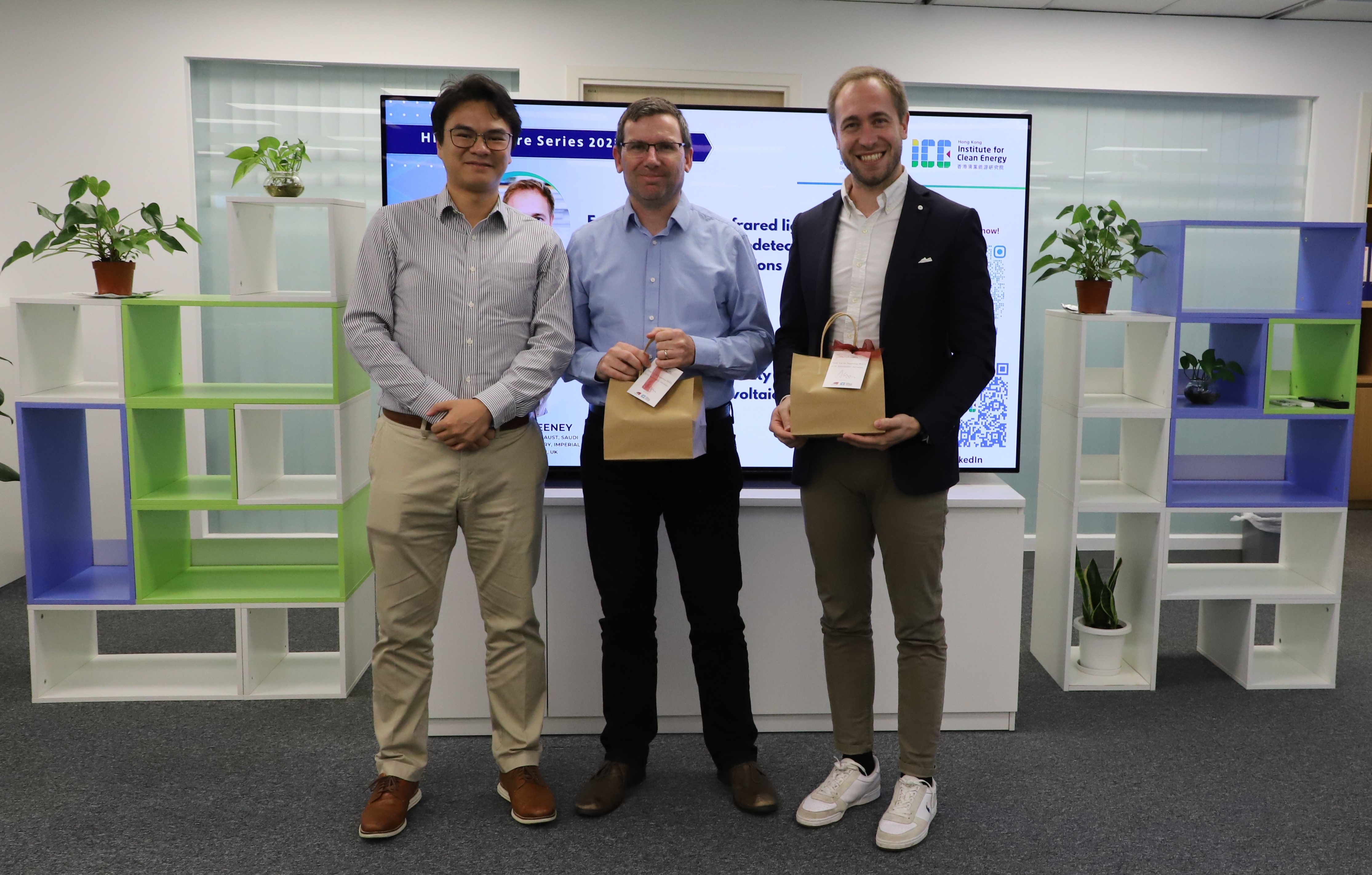
From UV to Near-Infrared light detection: next generation photodetectors for imaging and biometric applications
Nicola Gasparini
The current success of organic semiconductor technology is mainly driven by the development of organic light-emitting diodes (OLED), which are now routinely employed in display technologies. In the last decade, however, organic photovoltaics (OPV), leveraging the impressive improvement in device efficiency and stability, have gradually moved from a lab curiosity to a niche market. Their recent success has coincided with the rapid development of effective replacements for the fullerene-based materials that have been prevalent as electron acceptor materials until recently; namely the small molecule nonfullerene acceptors (NFAs). This relatively new class of materials offer a number of opportunities to develop new areas of research. Between those, organic photodetector (OPD), a technology based on organic photodiodes and thus closely related to OPV, is one of the most exciting. Recent efforts in the field of OPD have been focused on extending broadband detection into the near-infrared (NIR) region. The early absorption cut-off of solution processed organic semiconductors presents a challenge in achieving NIR detection, however, careful tuning of their chemical structures can help extend OPD responsivity into the infrared window. Here, we discuss how to design donor:acceptor blends and control charge carrier recombination in organic photodetectors for NIR light-to-current conversion for high efficiency and stable devices.
About the Speaker: Dr. Nicola Gasparini received his B.Sc. and M.Sc, in Chemistry and Organic Chemistry, and Photochemistry and Molecular Materials, respectively, from the University of Bologna, Italy. In 2014 he joined the group of Professor Brabec in the Institute of Materials for Electronics and Energy Technology (i-MEET) at the Friedrich Alexander University Erlangen-Nürnber (FAU) and received his PhD in 2017. In September 2017, he joined the King Abdullah University of Science and Technology (KAUST) as a postdoctoral fellow. In September 2019, he moved to the Department of Chemistry of Imperial College London as an independent researcher holding the Imperial College Research Fellowship. In early 2022, Nicola was appointed Lecturer in Chemistry (assistant professor, tenured) in the Department of Chemistry. He made major scientific contributions regarding the photophysical properties of organic semiconductors, resulting in over 100 publications. His research interests are in organic semiconductors, with particular interests in charge transport and recombination processes in organic solar cells and photodetectors.
Design of low complexity active materials for photovoltaic applications
Martin Heeney
The overall efficiency of organic photovoltaic devices has made impressive progress in recent years, but often active materials now require complex, multi-step synthesis, potentially limiting their application. We report approaches to prepare building blocks in just one or two steps, allowing the preparation of conjugated polymers of low synthetic complexity which can be readily upscaled. I will highlight how this approach can be used to readily build libraries of conjugated polymers to more rapidly identify promising materials for application in OPV and OECT devices. Finally approaches to introduce additional functionality via post-polymerisation backbone modification will be discussed.
About the Speaker: Martin Heeney is a Professor of Chemical Science at King Abdullah University of Science and Technology (KAUST) and Professor of Organic Materials at Imperial College. He is a graduate of the University of East Anglia and received his PhD from the same institution in 1999 under the supervision of Prof. Michael Cook. Following a postdoctoral position with a start-up company in the area of photodynamic therapy, he joined Merck Chemicals in 2000, eventually becoming project leader for the organic electronics team. He made the move to academia in 2007, joining the Materials Department at Queen Mary University of London as a senior lecturer. In 2009 he moved across London to join the Chemistry Department at Imperial College London. His research interests include the design, synthesis and characterisation of conjugated materials for a variety of applications. He has published over 400 research papers, 5 book chapters and over 100 patents. His work has been cited over 34,000 times and he has an h-index of 97. He has been named five times by Thomson Reuters as a HighlyCited researcher in the field of Materials Science, is a recipient of the RSC Corday-Morgan (2013) medal, the RSC Peter Day (2020) award and the Macro group UK medal (2020).
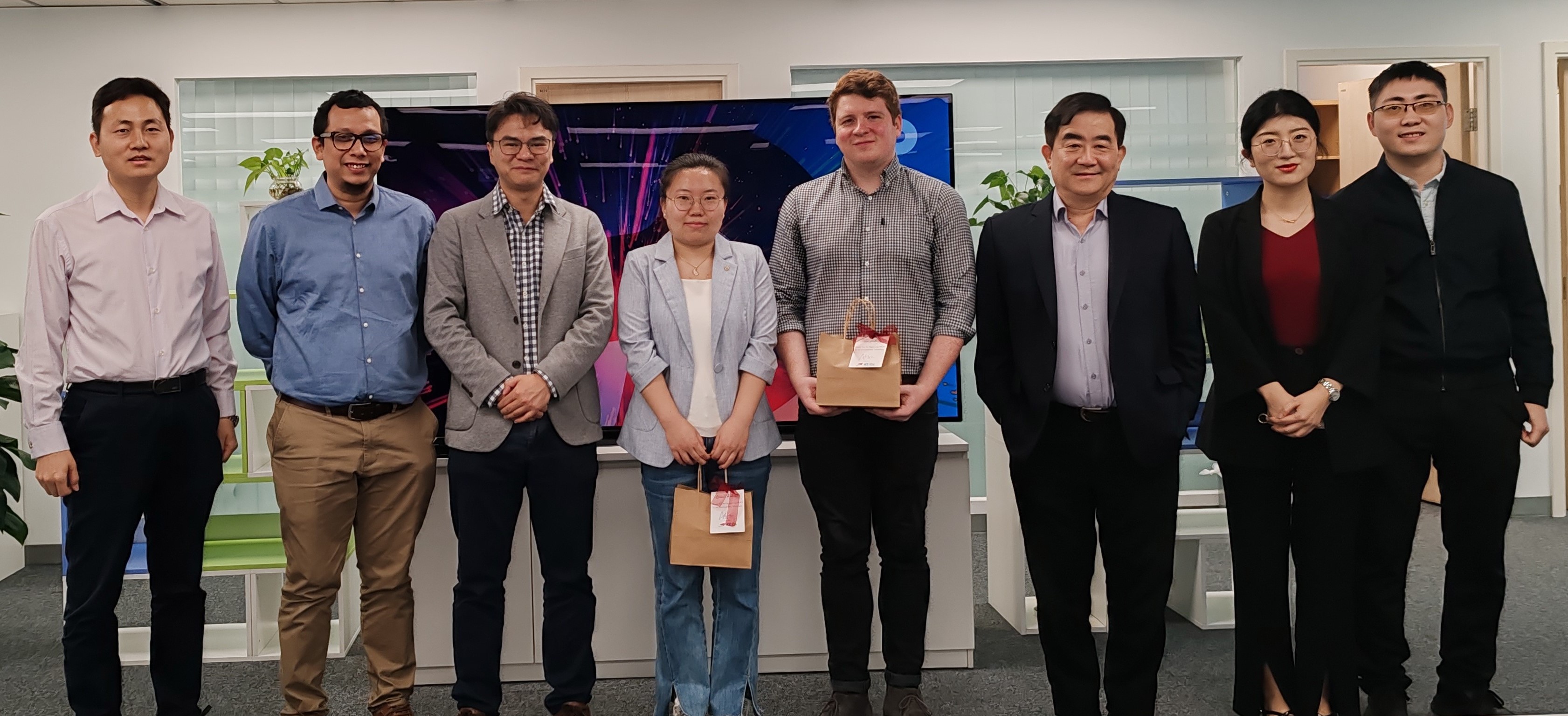
High Impact Publishing at Joule
Andrew WADSWORTH & Ruhui CHEN
Joule is one of the leading high impact journals publishing energy research, covering a range of topics
and scales from the fundamental understanding of energy-relevant phenomena, to the fabrication of
devices and the development of policy and engineering solutions leading to the deployment of
energy technologies in the real world. In this talk we aim to introduce Joule, what we are looking for
at the journal and provide more clarity on the role of an editor and the process of how we consider
manuscripts. Further we will provide some advice from an editor’s perspective of what makes a
paper suitable for Joule and how to approach preparing a paper for submission to the journal. We
will also introduce the rest of Cell Press’ growing physical science portfolio, and opportunities to
publish with them.
About the Speakers:
Dr Andrew Wadsworth has been a Scientific Editor at Joule since 2021, and mainly handles the photovoltaics and device content at the journal. Prior to joining Joule, Dr Wadsworth completed his Ph.D at Imperial College London under the supervision of Prof. Iain McCulloch where he developed nonfullerene acceptors for photovoltaics. He then held Research Fellowship positions at Imperial College London and the University of Oxford where he developed organic semiconductor materials for a range of applications including photovoltaics, transistors, bioelectronics and photocatalysis.
Dr. Ruhui Chen obtained her BE in macromolecular science and engineering from University of Science and Technology of China. She then pursued PhD in chemistry at Georgia Institute of Technology under the supervision of Prof. Younan Xia, working on noble-metal nanocrystals synthesis and electrocatalytic applications. After that,
she worked as an associate editor for chemistry journals at Wiley. Ruhui joined the Joule team as a scientific editor in 2023, and also serves as the consulting editor for Chem Catalysis. She mainly handles catalysis content at the journal.